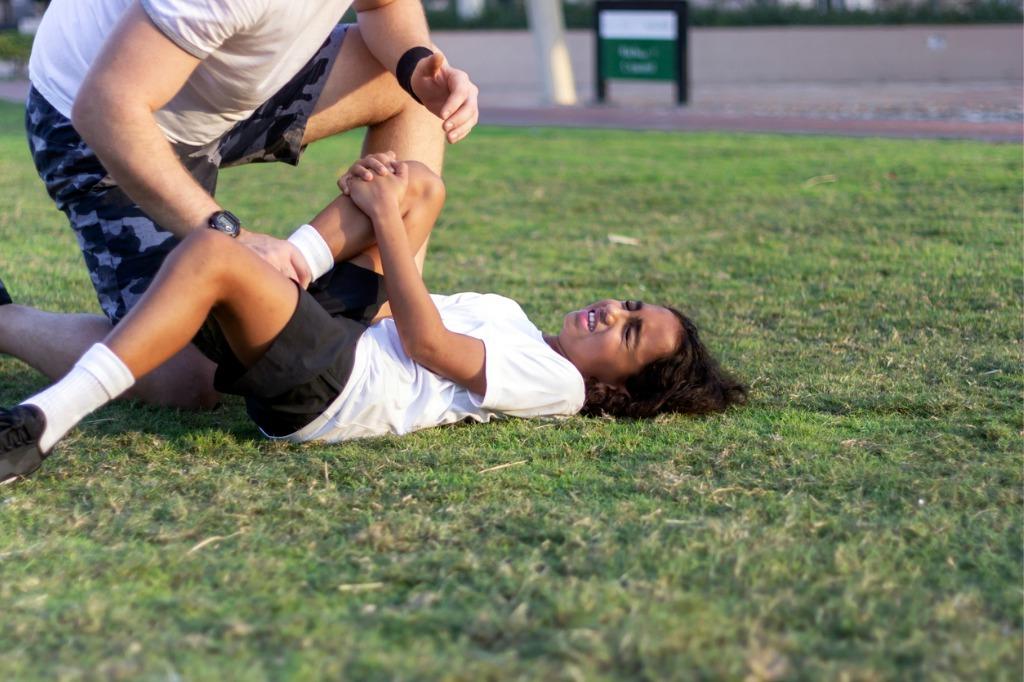
The anterior cruciate ligament (ACL) is a crucial stabilizer of the knee, especially for athletes. In recent years, there’s been a noticeable rise in ACL injuries among young athletes. These injuries may sideline young players for months and may have long-term implications. Fortunately, with the right knowledge and preventive measures, you can learn how to prevent an ACL injury.
At the Performance Sports Medicine Institute (PSMI), we are dedicated to helping athletes of all ages achieve peak performance while ensuring their safety and well-being. Through comprehensive training, education, and care, we empower athletes to play with confidence, knowing they’re protected against potential injuries.
Understanding the ACL and Its Importance
The ACL is one of the four primary ligaments in the knee, connecting the femur (thigh bone) to the tibia (shin bone). It plays a pivotal role in stabilizing the knee during rotational movements. This ligament is particularly vulnerable during high-impact activities and sudden changes in direction, which are common in many sports. An injury to the ACL may result in decreased stability and mobility of the knee, making it essential for athletes to understand its function and the importance of preventive measures to protect it.
Why Are Young Athletes at Risk?
Child and teen athletes are still growing, which means their bones, muscles, and ligaments are continually developing. This growth phase can make them more susceptible to injuries, especially when they’re involved in high-impact sports. The immature skeletal and muscular systems of young athletes simply aren’t as strong or developed as those of adults, putting them at an increased risk for ACL injuries. Because of anatomical differences, girls are more likely to experience ACL injuries than boys.
Long-term Implications of ACL Injuries
An ACL injury during childhood or adolescence may have lasting effects. Not only does it mean time away from the sport, but it may also lead to complications like early-onset arthritis. Moreover, young athletes who suffer from ACL injuries are more likely to experience knee problems later in life. If left untreated, these injuries may lead to chronic pain.
Proactive Measures to Prevent ACL Injuries
Proactive measures must be implemented to mitigate the risk of ACL injuries in young athletes. The following section will present a range of strategies that can be incorporated into training regimens, which aim to strengthen the knee and enhance its stability. When consistently applied, these measures may prevent ACL injuries and support long-term success and well-being for young athletes.
Strength Training and Conditioning
Building muscle strength, especially in the legs and core, can provide better support to the knee. Additionally, a well-conditioned athlete is less likely to suffer from injuries. Incorporating exercises like squats, lunges, and plyometrics can be beneficial. Preparing your body specifically for the sport you’re involved in will enhance its ability to absorb shocks and sudden changes in direction. This will reduce the impact on an athlete’s joints, decreasing their risk of ACL injuries.
Proper Technique and Training
Young athletes are often eager to progress and learn new skills, which can benefit their development. However, mastering a skill requires patience and practice. It’s important young athletes are taught proper technique as they work towards developing their ability and performance. Ensuring an athlete is properly trained can help reduce the risk of injury. Coaches, trainers, and physical therapists can provide guidance on proper technique and form.
Regular Rest and Recovery
Your body needs time to rest and recover. It’s vital that young athletes get enough sleep, between 8-10 hours a night, and take regular breaks from training. This will give their bodies time to rest and rebuild lost energy while reducing the risk of fatigue and overuse injuries. It’s also essential for athletes to stay hydrated throughout exercise as this helps regulate body temperature and maintain elasticity in muscles, ligaments, and tendons. The following recovery techniques are recommended between training sessions:
- Massage therapy
- Cold/ice therapy
- Compression garments
- Foam rolling
- Stretching
- Physical therapy
Physical Therapy
Physical therapy is an integral part of injury prevention and rehabilitation. It can provide a wide range of benefits, from enhancing muscular strength to restoring joint function. Physical therapists work with athletes to develop personalized programs designed to maximize performance and reduce the risk of injuries. For young athletes recovering from ACL injuries, physical therapy may help them regain their full range of motion and strength, as well as their ability to compete at a high level.
The Role of Equipment and Environment
The right equipment and a safe playing environment are vital in preventing injuries. For example, the type of shoes young athletes wear may influence their injury risk. Shoes should provide adequate support, especially during high-impact activities. Be sure to break in new shoes before wearing them for competition, and replace them as soon as they show signs of wear. Additionally, athletes should be mindful of their environment and make sure the field or court is free from hazards that could lead to falls or collisions. Furthermore, uneven ground should be avoided as much as possible as it increases the risk of an ACL injury.
Protecting the Future of Young Athletes at PSMI
At Performance Sports Medicine Institute, we prioritize the well-being of our young athletes and encourage children and their families to learn how to prevent an ACL injury. If you have concerns about ACL injuries or any other sports-related issues, don’t hesitate to reach out. Our team of experts is here to guide, support, and ensure a safe sporting journey for your child. Book an appointment at PSMI today and get the most out of your child’s athletic experience.

